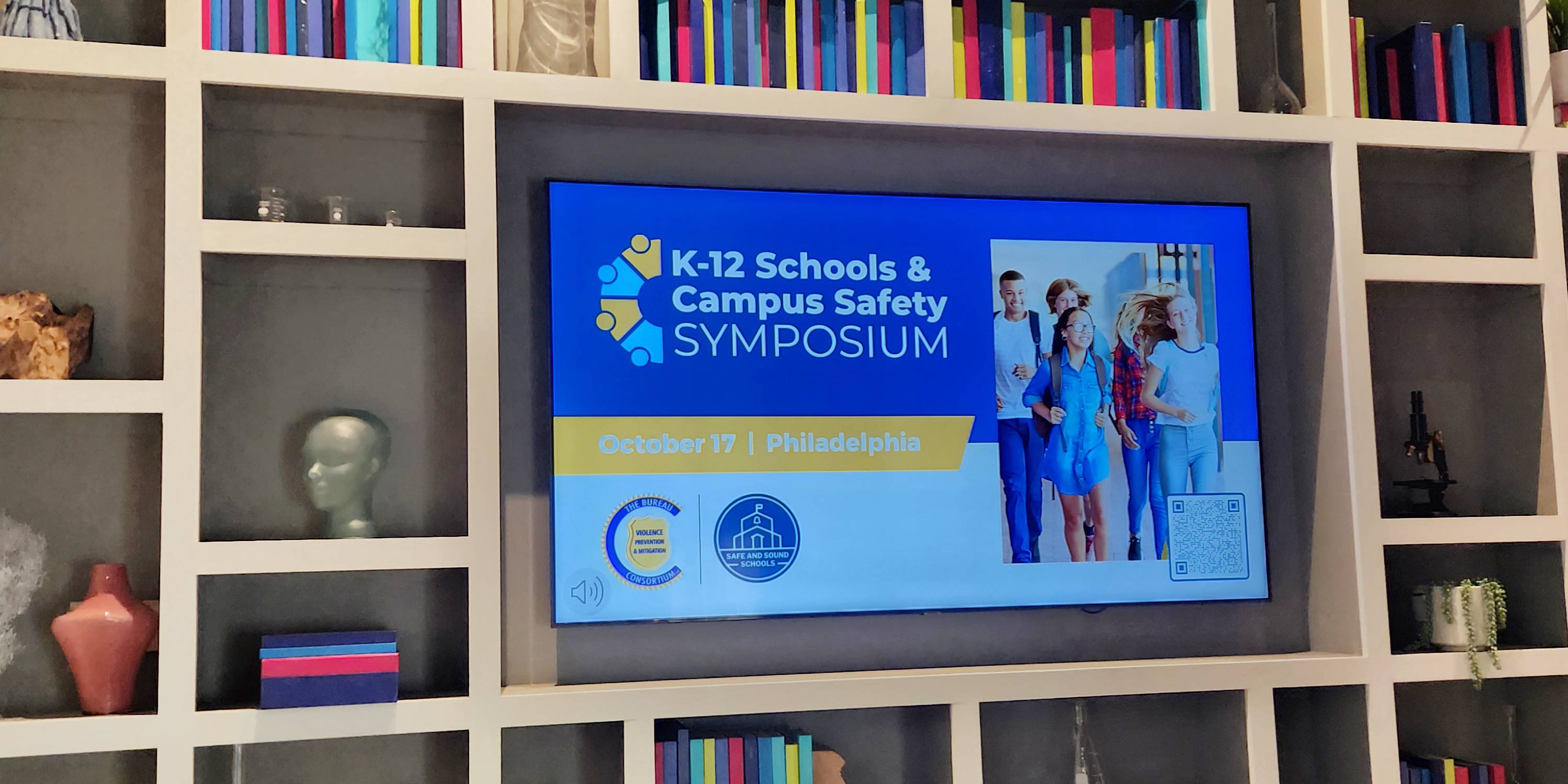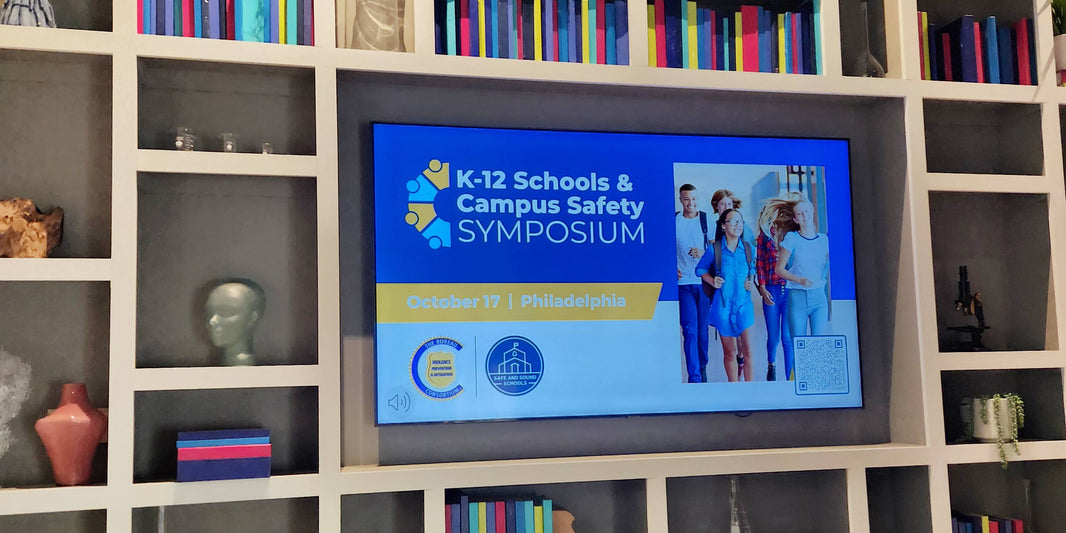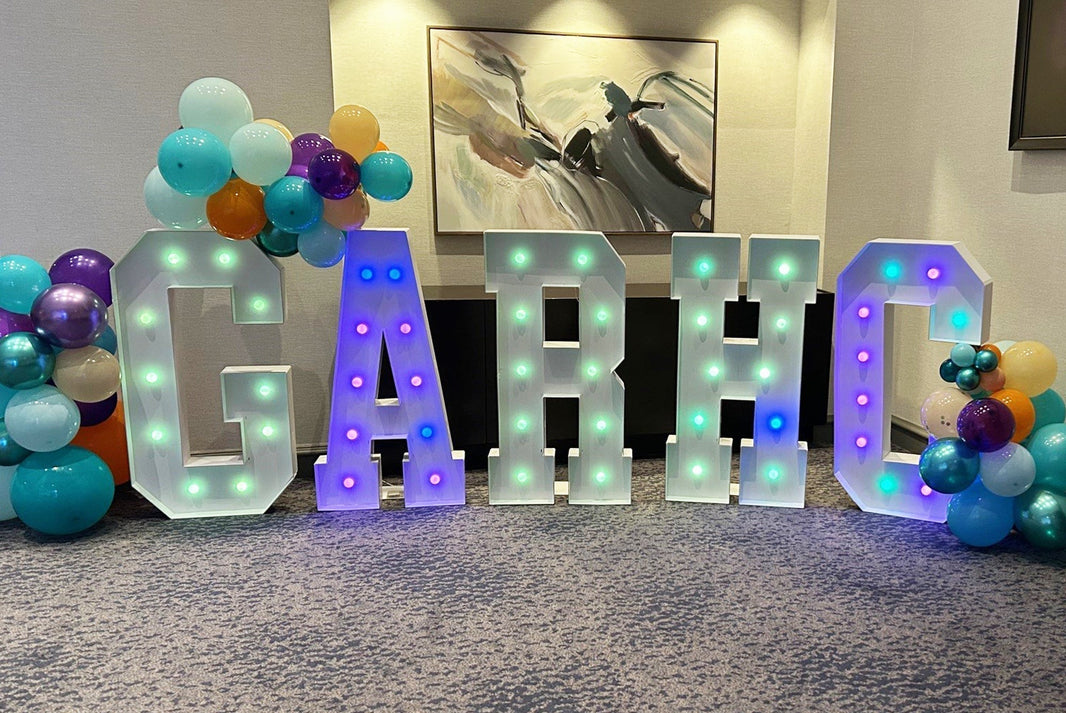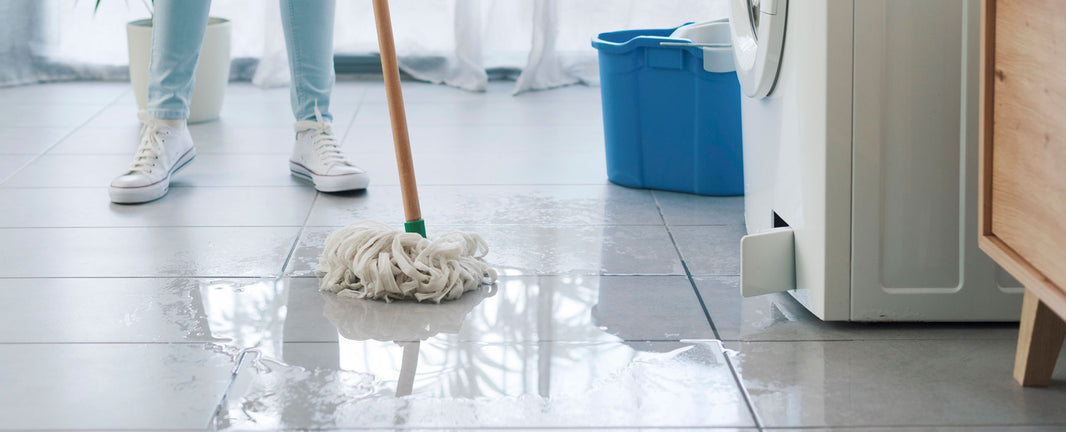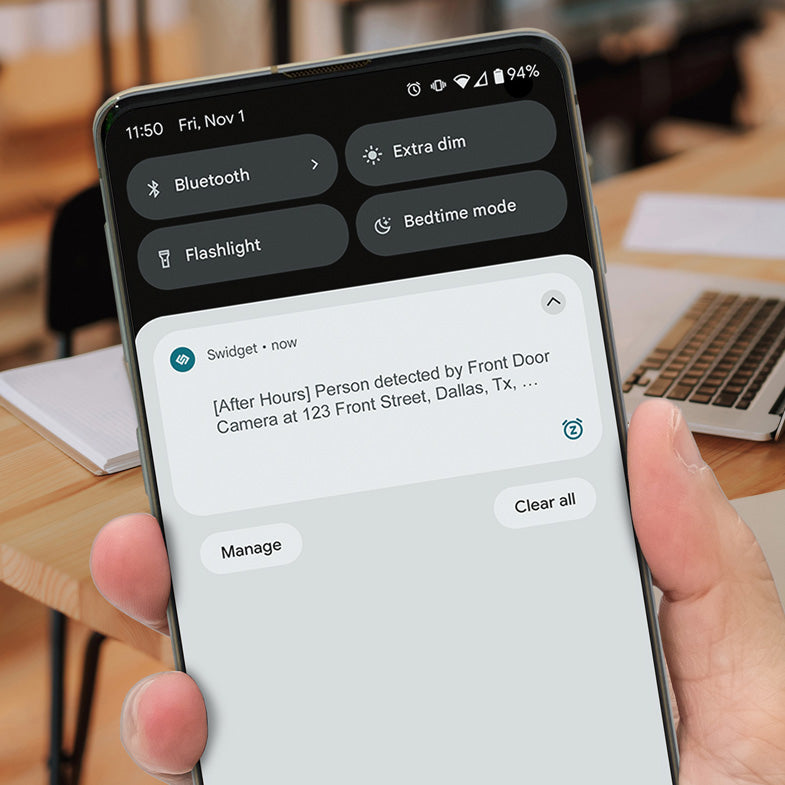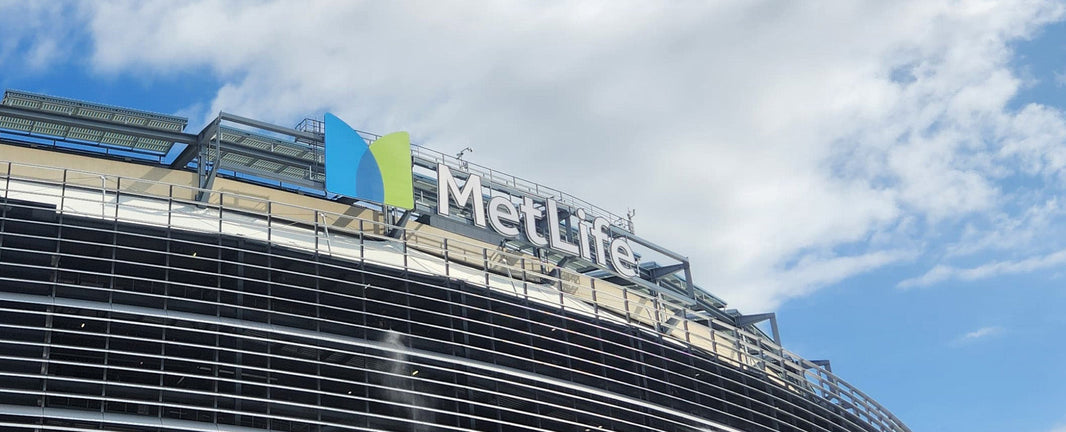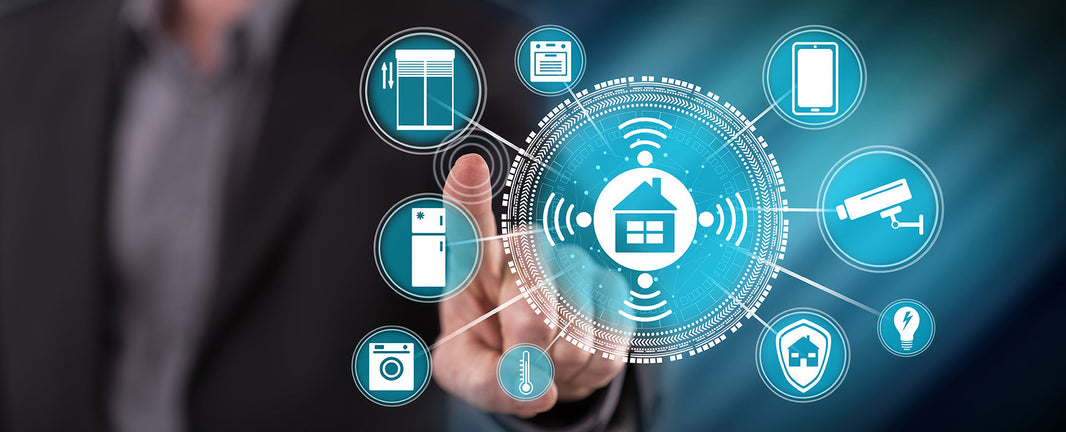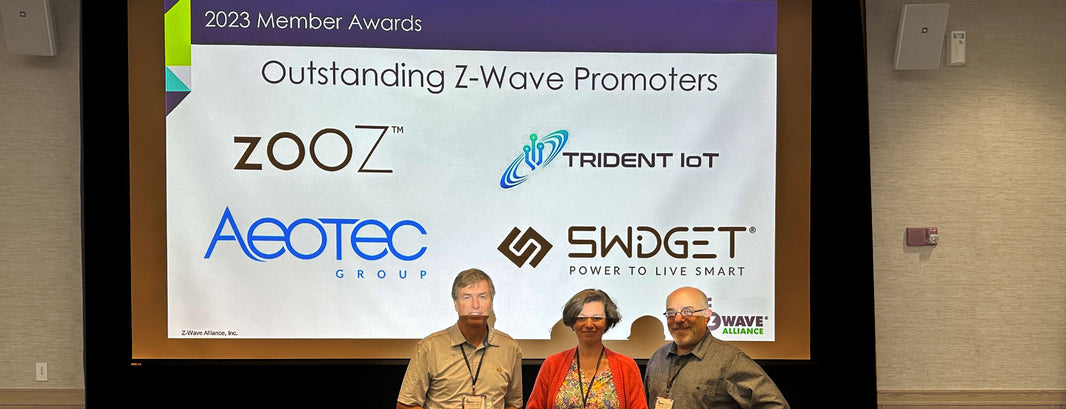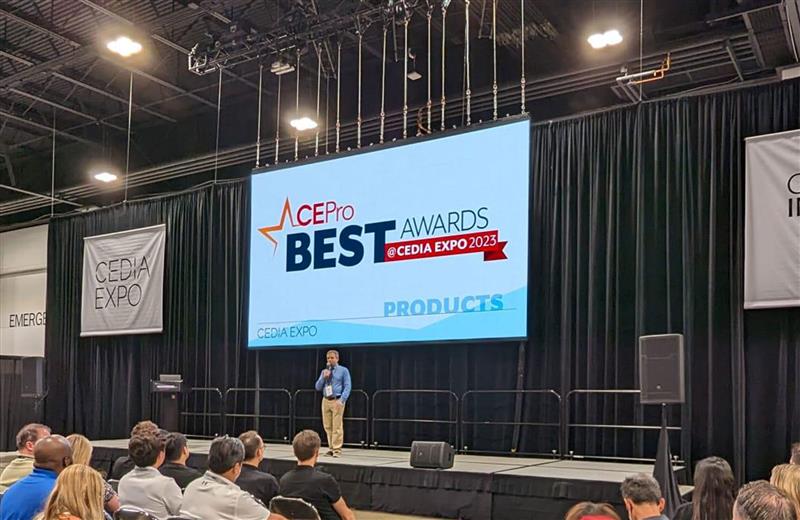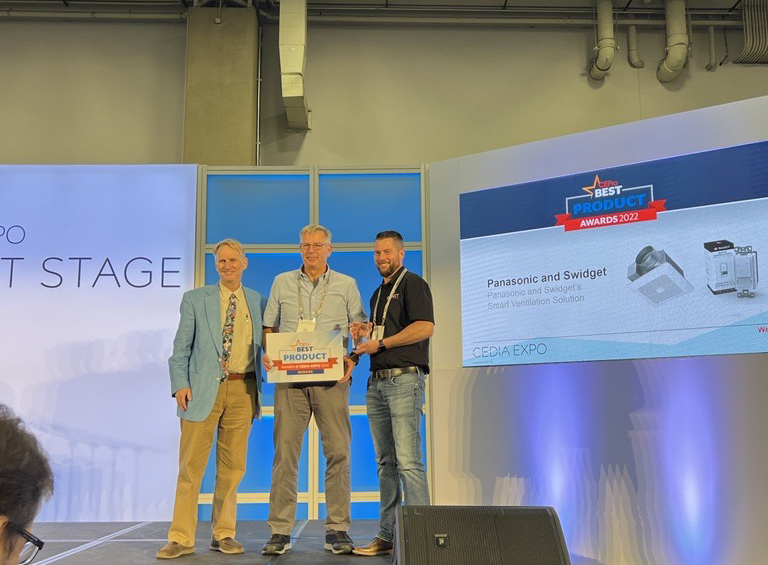Reflections from the K–12 Schools and Campus Safety Symposium
Last week, our team attended the K–12 Schools and Campus Safety Symposium, joining educators, law enforcement personnel, technology experts, and behavioral specialists all dedicated to one shared goal: making schools safer for every student, educator, and family.
The discussions throughout the day underscored a powerful truth: school safety is not a single tool, policy, or practice. It’s a collaborative effort built on awareness, preparation, empathy, and action. Below are some of the key takeaways that resonated most with us.
Protecting the Gift of the Future
Craig Johnson, Deputy Chief of School Safety, School District of Philadelphia

Craig Johnson emphasized a three-pronged approach to safety: improving the physical makeup of schools, adding protective technologies, and investing in personnel training. But it was his closing reminder that struck the strongest chord: “We’re protecting the gift of the future of our kids.”
His message reinforced that while emergency plans and infrastructure matter, the heart of school safety lies in protecting every child through readiness, care, and community responsibility.
A Parent’s Perspective: Empowering the Everyday Protector
Michele Gay, Co-founder, Safe and Sound Schools

Michele’s story, rooted in her personal experience as a parent and educator, was a moving call to action. She reminded us that during crises, it’s often teachers and parents who end up becoming the first responders.
A message that resonated with us was to focus on simple, empowering measures. Something as small as ensuring classroom doors can lock from the inside can save lives. Real safety begins with equipping everyday heroes (our educators, staff, and families) with the tools and training they need to act decisively.
Keys to Effective School Security: Awareness, Collaboration, and Youth Involvement
Paul Timm, Physical Security Expert, Allegion

Paul Timm broke down school security into three key principles: collaboration, awareness, and youth involvement. He reminded attendees that true safety culture starts from the top but lives in daily practice through staff briefings, open communication, and student engagement.
“Students are ahead of us in technology,” he noted, “and we’re not in a day and age where we can opt in.”
From access control to emergency drills, Paul’s insights reinforced that proactive preparation, rather than reactive response, is what keeps schools safe.
The Human Side of Threat Assessment
Dr. Melissa M. Nelson, Behavioral Threat Assessment Expert, Park Dietz & Associates

Dr. Nelson’s session explored the evolving landscape of behavioral threat assessment and the importance of caring for those doing the work. She shared a powerful metaphor: every professional in this space needs two boxes – one for the emotions they must manage and another for hope which allows them to keep going.
Her message was clear: we can only protect others if we also protect ourselves. By fostering empathy, self-care, and multidisciplinary collaboration, schools can better identify and support students in crisis before harm occurs.

Moving Forward Together: Culture, Collaboration, and Compassion
Panel Discussion: Joey Melvin, Jill Renihan, Anthony Sivo, Sharon Flynn, and Dr. Melissa Nelson
This diverse panel highlighted how safety requires both structure and soul. Technology can act as a force multiplier, but relationships, trust, and training determine how effective those tools become.
Joey Melvin emphasized patience and partnership, reminding everyone that “ego is the enemy” when working across disciplines and that from a law enforcement perspective, building close relationships with counselors, principals, and administrators is key.
Jill Renihan reminded attendees that technology alone is not enough. Real-time information is critical, and cameras or access systems only help if staff are trained and empowered to use them effectively.
Anthony Sivo stressed the importance of prioritization and process, pointing out that districts can implement low-cost, practical measures first, like educating staff about available resources, before tackling larger structural changes.
Sharon Flynn spoke passionately about school culture, stating that true safety begins when “students feel seen, safe, and heard,” and highlighted the importance of not only facilitating drills, but debriefing on the drills with both students and staff.
Dr. Melissa Nelson reinforced the human side of school safety, emphasizing that a solution starts with self-care for staff and that collaborative behavioral threat assessment only works when everyone involved understands their role and the “why” behind the actions.
The takeaway? Every school needs a champion; someone who drives the mission forward with empathy and consistency. By combining culture, collaboration, and practical preparedness, schools can turn safety plans into meaningful, actionable results.
Beyond Thoughts and Prayers: Turning Resolve into Action
Jill Lemond, VP of Education, Evolv (Former Assistant Superintendent, Oxford Community Schools)

Closing the day, Jill Lemond delivered an emotional and pragmatic reflection on what comes after tragedy. Drawing on her experience during the 2021 Oxford, Michigan school shooting, she underscored that real-time information and communication are critical during a crisis.
Her story emphasized that while security technologies like cameras, access control, and communications systems are vital, they must be paired with practice, preparedness, and partnership.
A Shared Responsibility for Safer Schools
Each session brought a different lens (policy, psychology, law enforcement, and lived experience), but together they painted a unified picture: safety is everyone’s responsibility.
As we continue to develop and advocate for solutions like Luminance™, we are inspired by the dedication and collaboration we witnessed.
Now more than ever, it’s essential for educators, parents, technologists, and law enforcement to work as one team, because protecting our schools means protecting our shared future.

